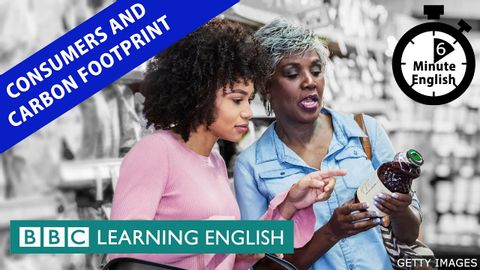Do consumers care about carbon footprints? - 6 Minute English
林宜悉 が 2022 年 02 月 26 日 に投稿  この条件に一致する単語はありません
この条件に一致する単語はありませんUS /ɪˈkwɪvələnt/
・
UK /ɪˈkwɪvələnt/
- adj.同等の;同義の
- n.等価 : (効果 : 価値などが)同等のもの
US /ˈkɑnˌtɛnt/
・
UK /'kɒntent/
- adj.満足している;満足した
- n. (c./u.)内容;主題;コンテンツ;満足;コンテンツ;含有量
- v.t.満足させる
- v.i.同意する
US /voˈkæbjəˌlɛri/
・
UK /və'kæbjələrɪ/
エネルギーを使用
すべての単語を解除
発音・解説・フィルター機能を解除
